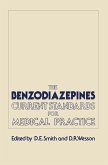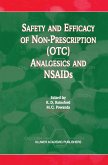`... the book ... does meet its aim, ... well produced and easy to read.' -- Medical Journal of Australia, October 1986.
Since their introduction to medical practice in 1960, benzodiazepines have become among the most commonly prescribed medications and have, to a great extent, replaced prescriptions of short-acting barbiturates and other sedative-hypnotics. The discovery of their psychoactive properties was almost missed. During a cleaning of their laboratory in April of 1957, Earl Reeder called to Leo Sternbach's attention several hundred milligrams of a substance and its hydrochloride salt they had synthesized in 1955 which had not been submitted for pharmacological testing. They sent the hydrochlor ide salt, later given the generic designation of chlordiazepoxide (Librium), for animal testing to the pharmacology department, which was under the direction of Lowell Randall. Six tests, used for preliminary screening of tranquilizers and sedatives, were conducted. Dr. Randall phoned Dr. Sternbach a few days later to report that the compound possessed interesting psychotropic properties in animals (Sternback. 1983). Subse quently over 3000 1,4 benzo-and heterodiazepines have been synthesized (Sternbach, 1983). and more is known about the mechanism of action of this class of medications than any other psychotropic drug class (Haefely, 1983). Used for treatment of anxiety. insomnia. muscle spasticity, convulsive disorders, anesthesia adjuncts and alcohol detoxification. the benzodiazepines have significant advantages over their predecessor medi cations: the short-acting barbiturates, meprobamate and methaqualone. Of significance is their high lethal/therapeutic ratio. of importance in cases of overdose; their failure to activate liver microsomal enzymes.
Since their introduction to medical practice in 1960, benzodiazepines have become among the most commonly prescribed medications and have, to a great extent, replaced prescriptions of short-acting barbiturates and other sedative-hypnotics. The discovery of their psychoactive properties was almost missed. During a cleaning of their laboratory in April of 1957, Earl Reeder called to Leo Sternbach's attention several hundred milligrams of a substance and its hydrochloride salt they had synthesized in 1955 which had not been submitted for pharmacological testing. They sent the hydrochlor ide salt, later given the generic designation of chlordiazepoxide (Librium), for animal testing to the pharmacology department, which was under the direction of Lowell Randall. Six tests, used for preliminary screening of tranquilizers and sedatives, were conducted. Dr. Randall phoned Dr. Sternbach a few days later to report that the compound possessed interesting psychotropic properties in animals (Sternback. 1983). Subse quently over 3000 1,4 benzo-and heterodiazepines have been synthesized (Sternbach, 1983). and more is known about the mechanism of action of this class of medications than any other psychotropic drug class (Haefely, 1983). Used for treatment of anxiety. insomnia. muscle spasticity, convulsive disorders, anesthesia adjuncts and alcohol detoxification. the benzodiazepines have significant advantages over their predecessor medi cations: the short-acting barbiturates, meprobamate and methaqualone. Of significance is their high lethal/therapeutic ratio. of importance in cases of overdose; their failure to activate liver microsomal enzymes.







